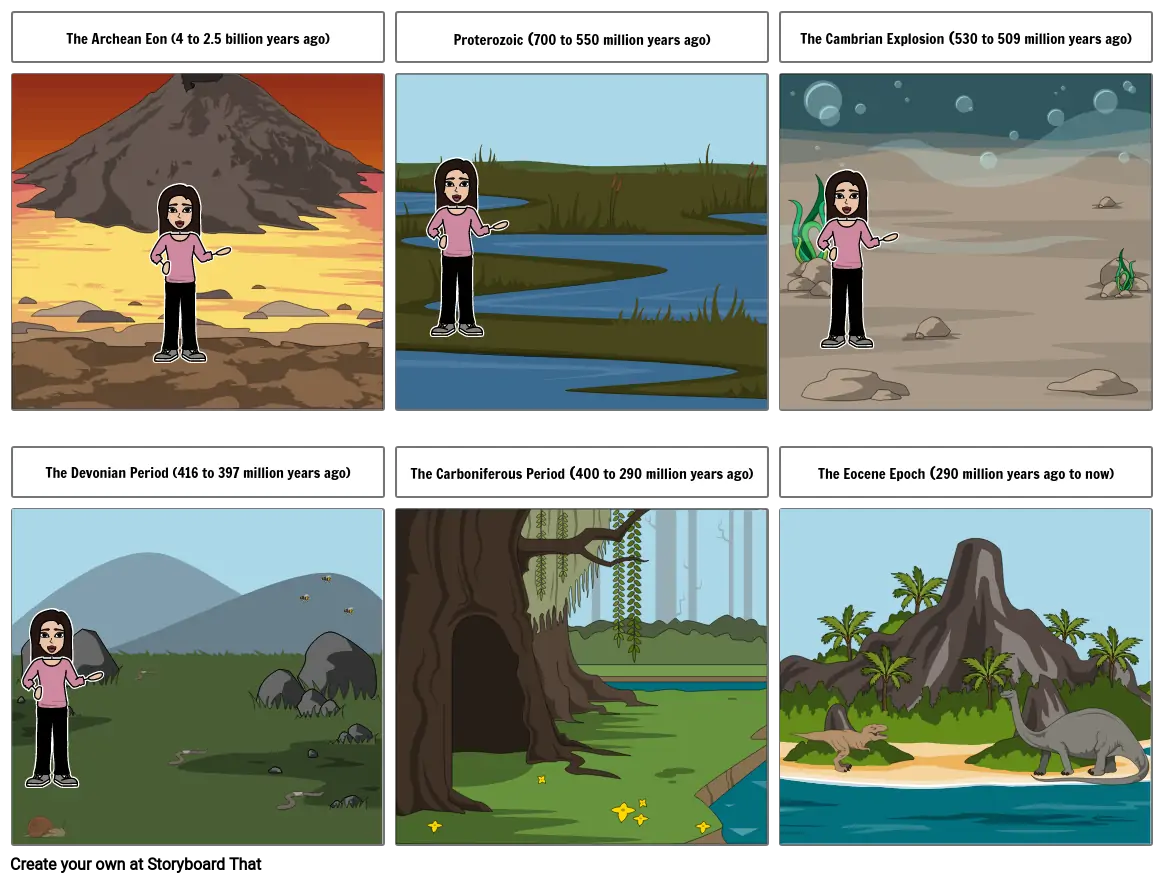Earth’s atmospheric evolution

Storyboard Text
- The Archean Eon
- When Earth formed 4.6 billion years ago, it had almost no atmosphere. As the Earth cooled, an atmosphere formed mainly from gases which spewed from volcanoes. It included hydrogen sulfide, methane and ten to 200 times as much carbon dioxide as today's atmosphere.
- Proterozoic
- Between 700-550 million years ago, oxygen levels in the oceans and atmosphere increased dramatically. Photosynthetic bacteria had been making oxygen for about 300 million years allowing the methane haze cleared 2 billion years ago as the oxygen in the atmosphere built up. By 600 million years ago, the oxygen in the atmosphere reached about one-fifth of today’s level (21 percent).
- The Cambrian Explosion
- According to some scientists, the increase in oxygen helped fuel the burst of sea life known as Cambrian explosion, which occurred between 530 and 509 million years ago and included the evolution of eurypterids and trilobites.
- The Devonian Period
- Plants and the first four-footed animals evolved during the Devonian Period, which was about 416-397 million years.
- The Carboniferous Period
- During the Carboniferous Period, plants were firmly established on land and had a major affect on the Earths atmosphere. Oxygen made up 20% of the Earths atmosphere - similar to todays level - around 350 million years ago, it then rose to as much as 35% over the next 50 million years ago.
- The Eocene Epoch
- The Eocene Epoch was the warmest part of the past 65 million years. During the early Eocene, palm tree trees grew as far north as Canada. The Arctic Ocean was not permanently frozen, alligator relatives swam in the swamps on Ellesmere Island, and mammals related to flying lemurs climbed in the dawn redwood trees.
Over 30 Million Storyboards Created

